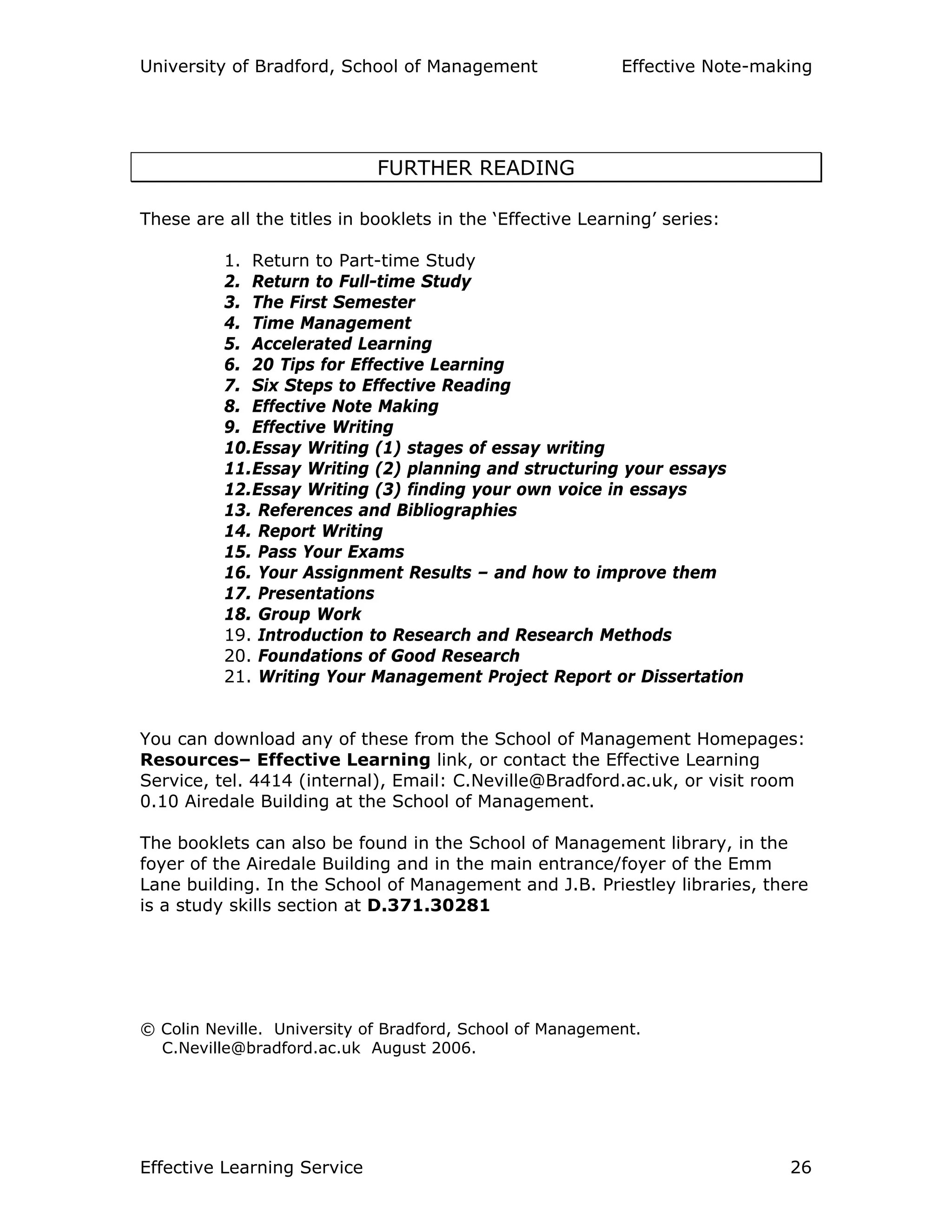- There are different styles of note-taking, including linear notes, visual or pattern notes, and voice notes. Note-taking involves summarizing key points, while note-making adds reviewing, organizing, and connecting ideas.
- Effective note-making involves both taking notes initially and then revisiting notes through activities like summarizing, questioning, and discussing ideas with others. This deeper engagement helps with recall and understanding.
- Research shows that writing notes can aid recall if the notes are reviewed later, though the style of notes matters less than actively engaging with the material in multiple ways. Discussing notes with others also strengthens learning.
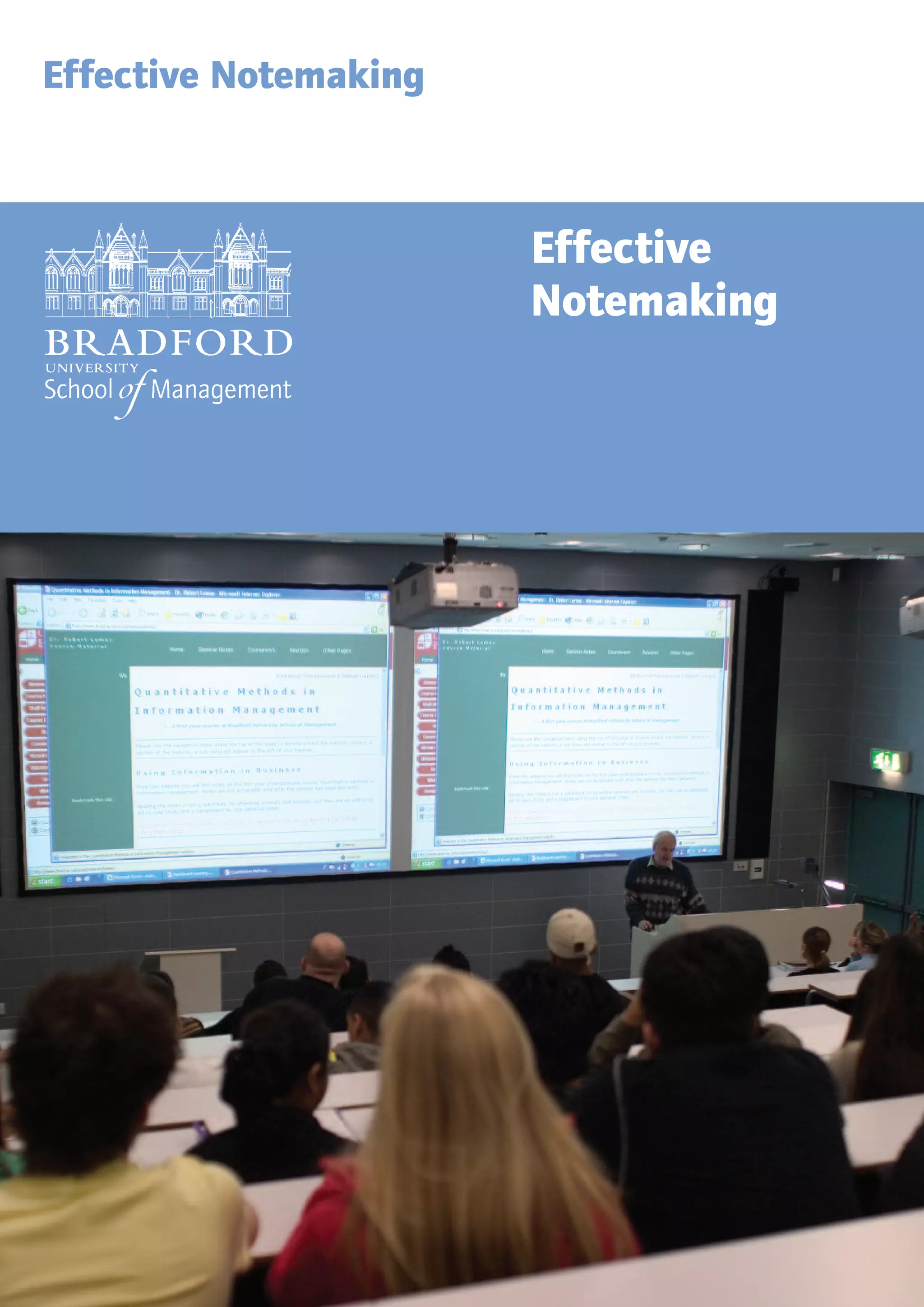
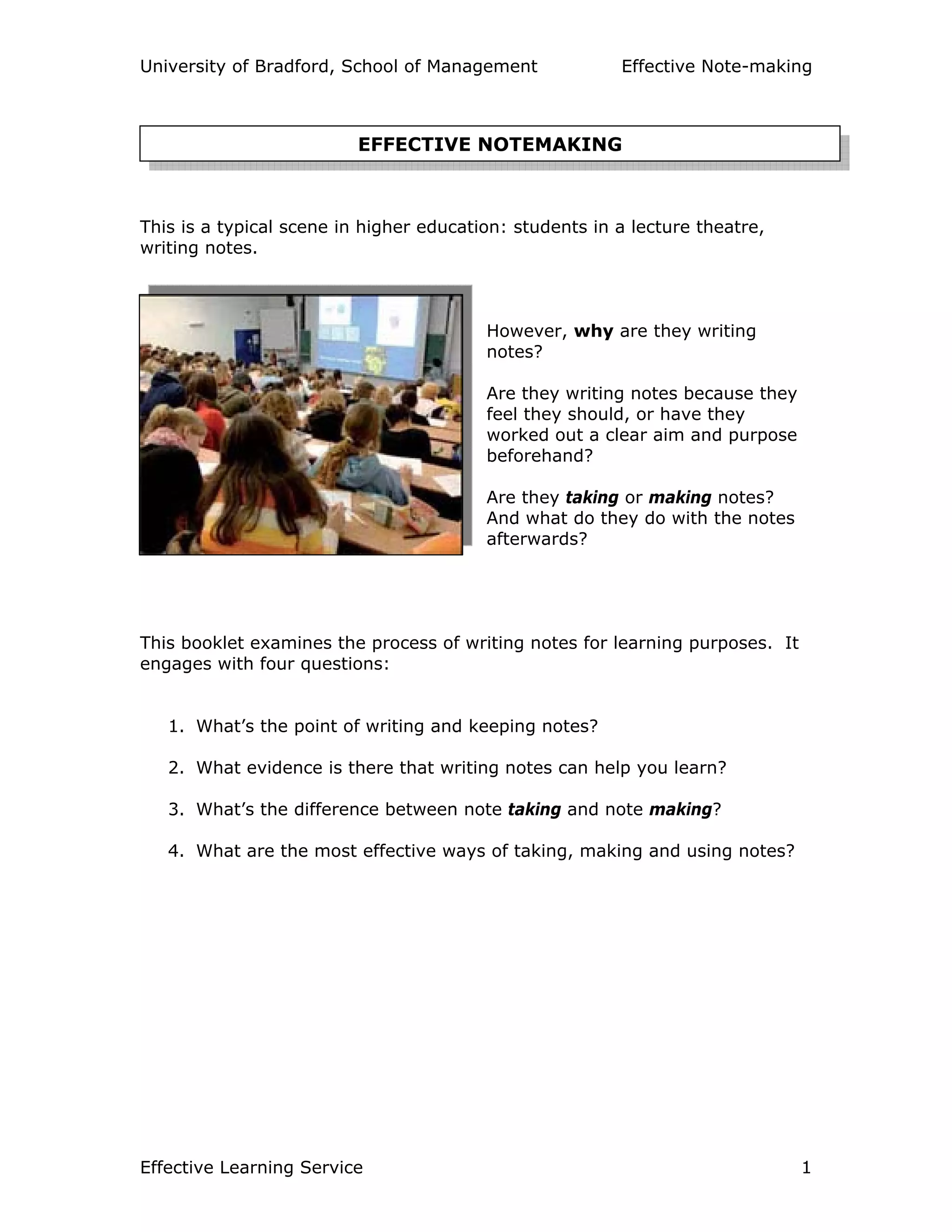
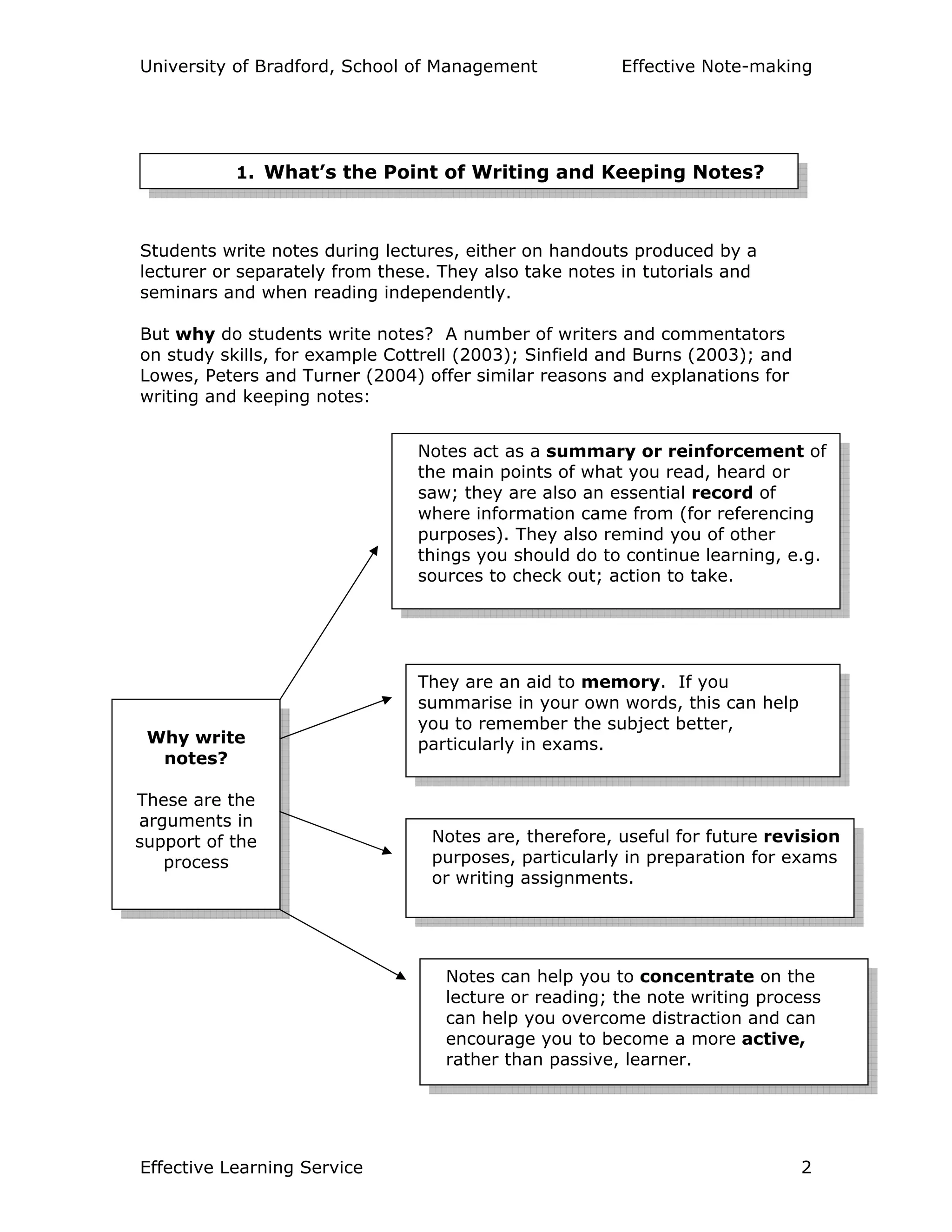
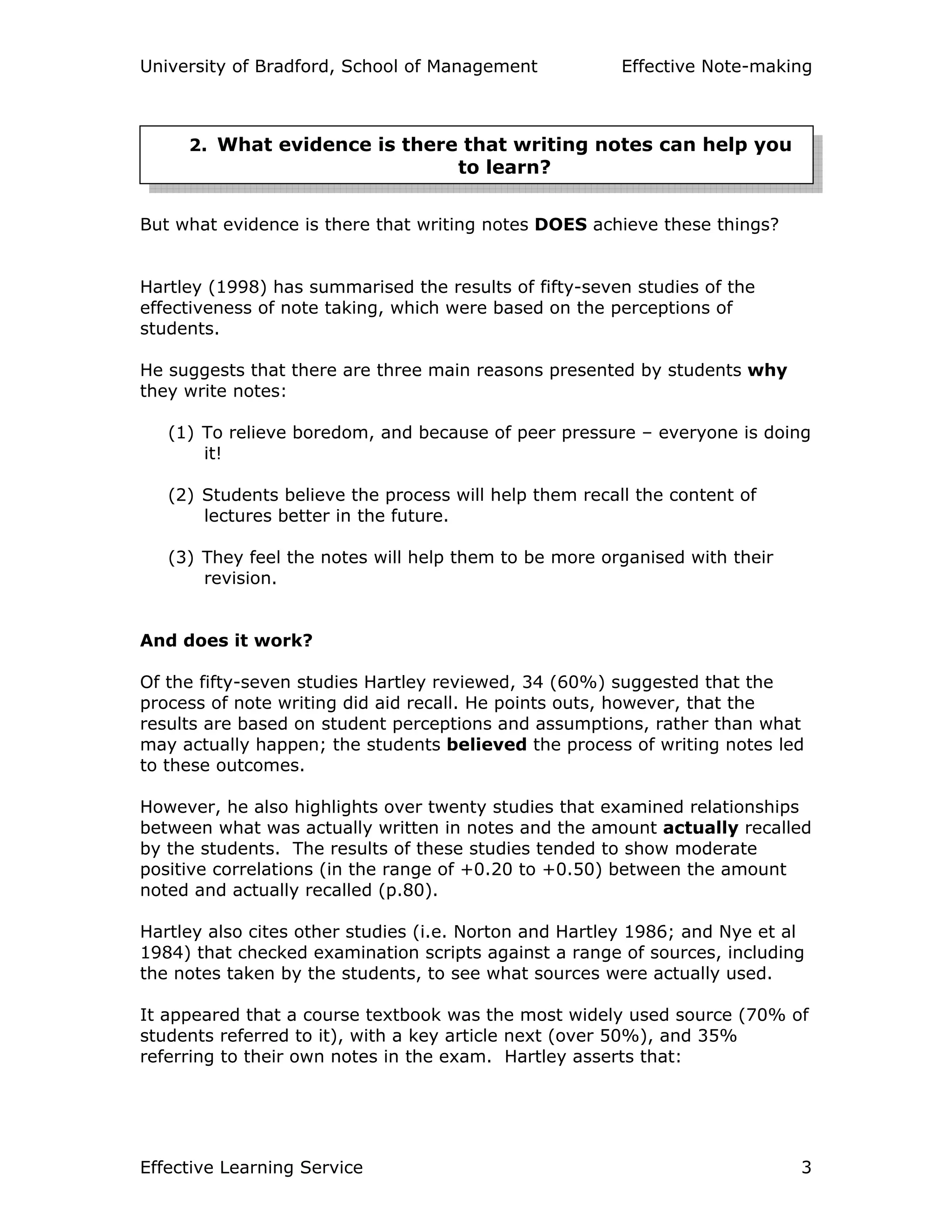
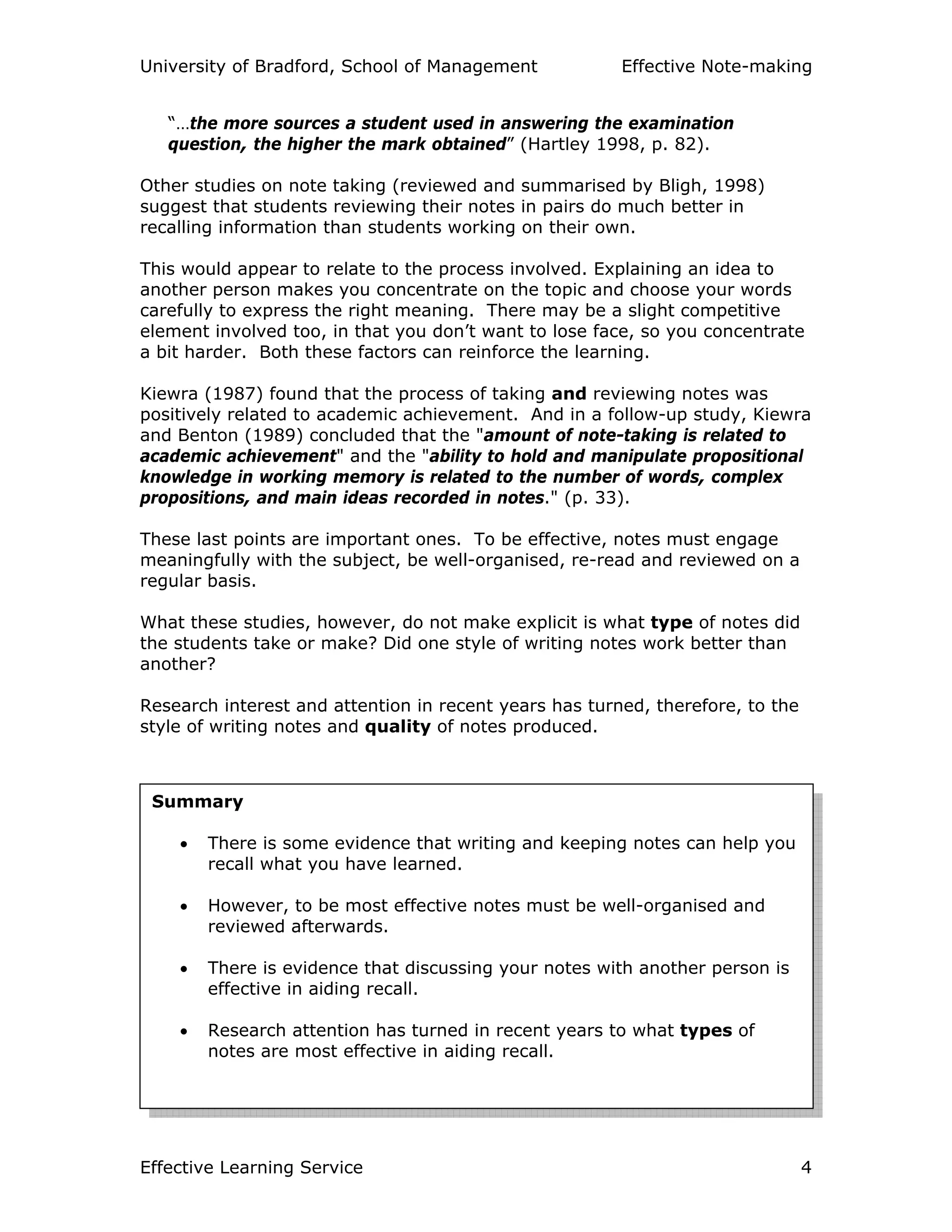
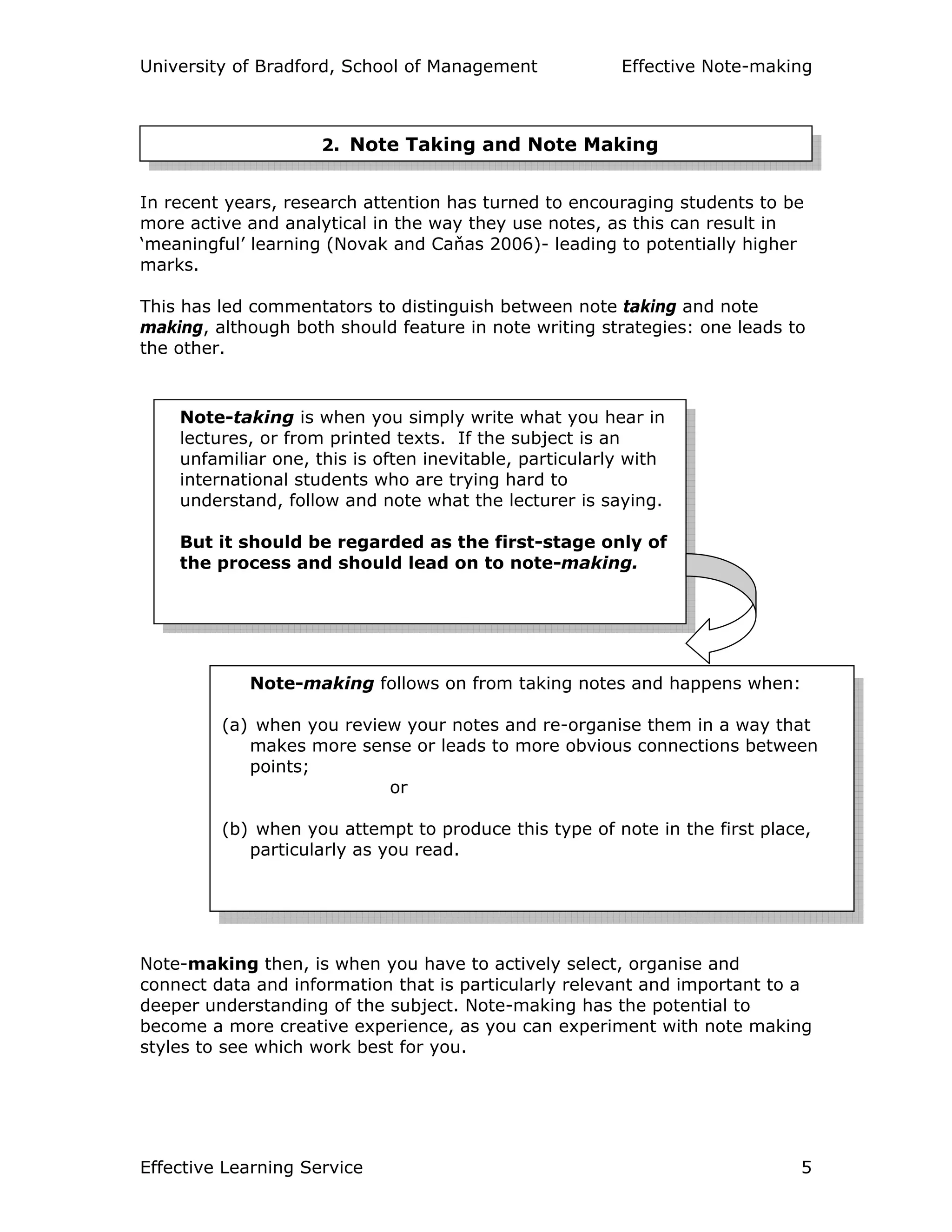
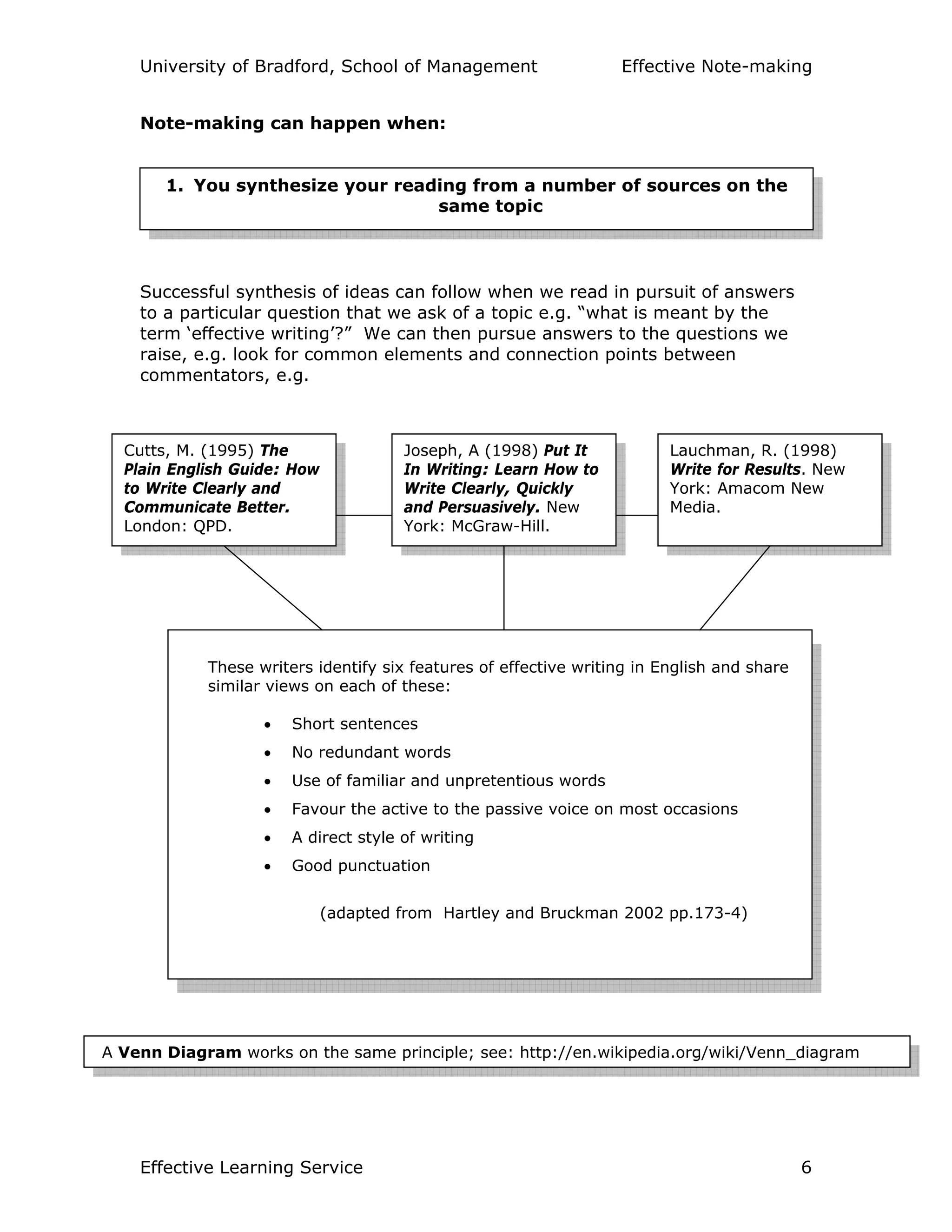
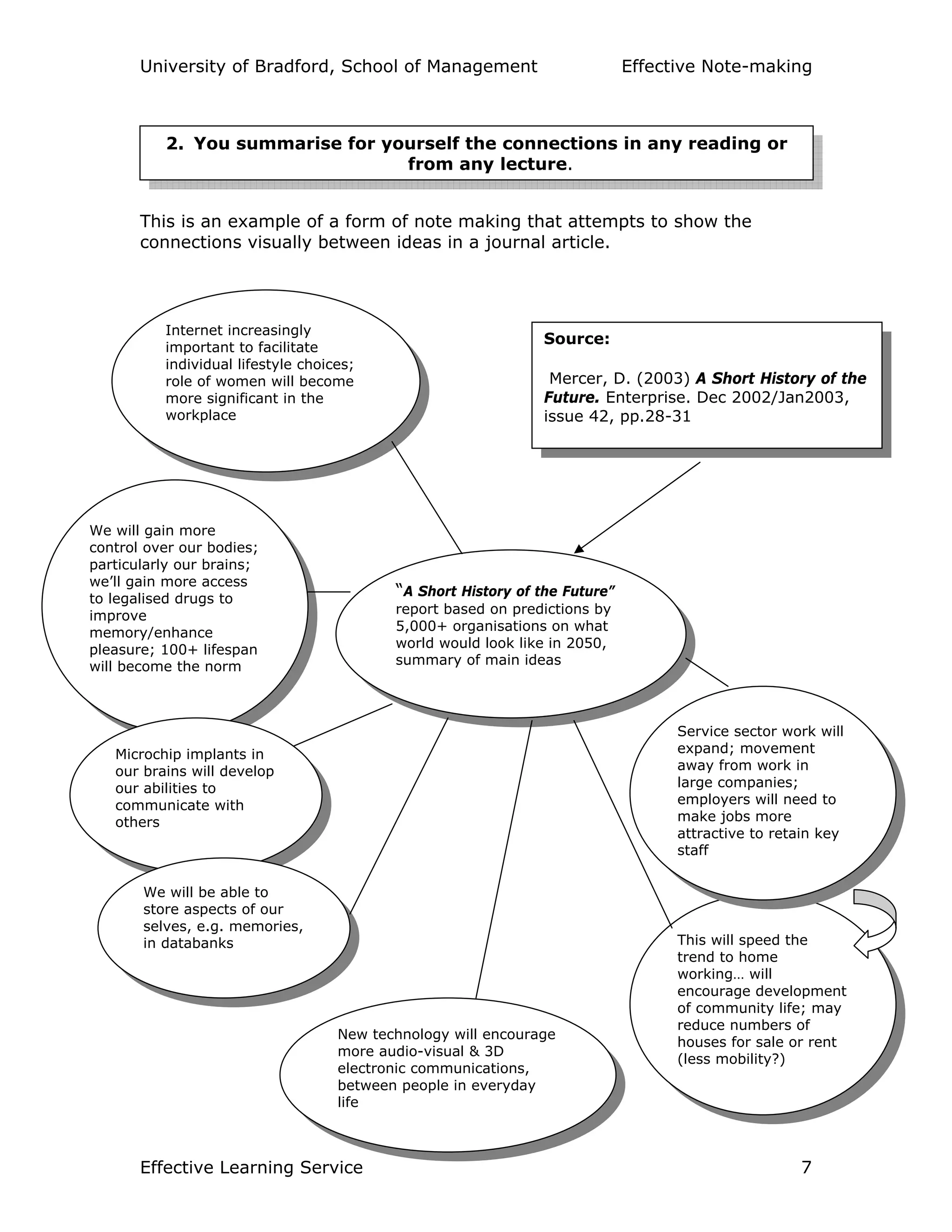

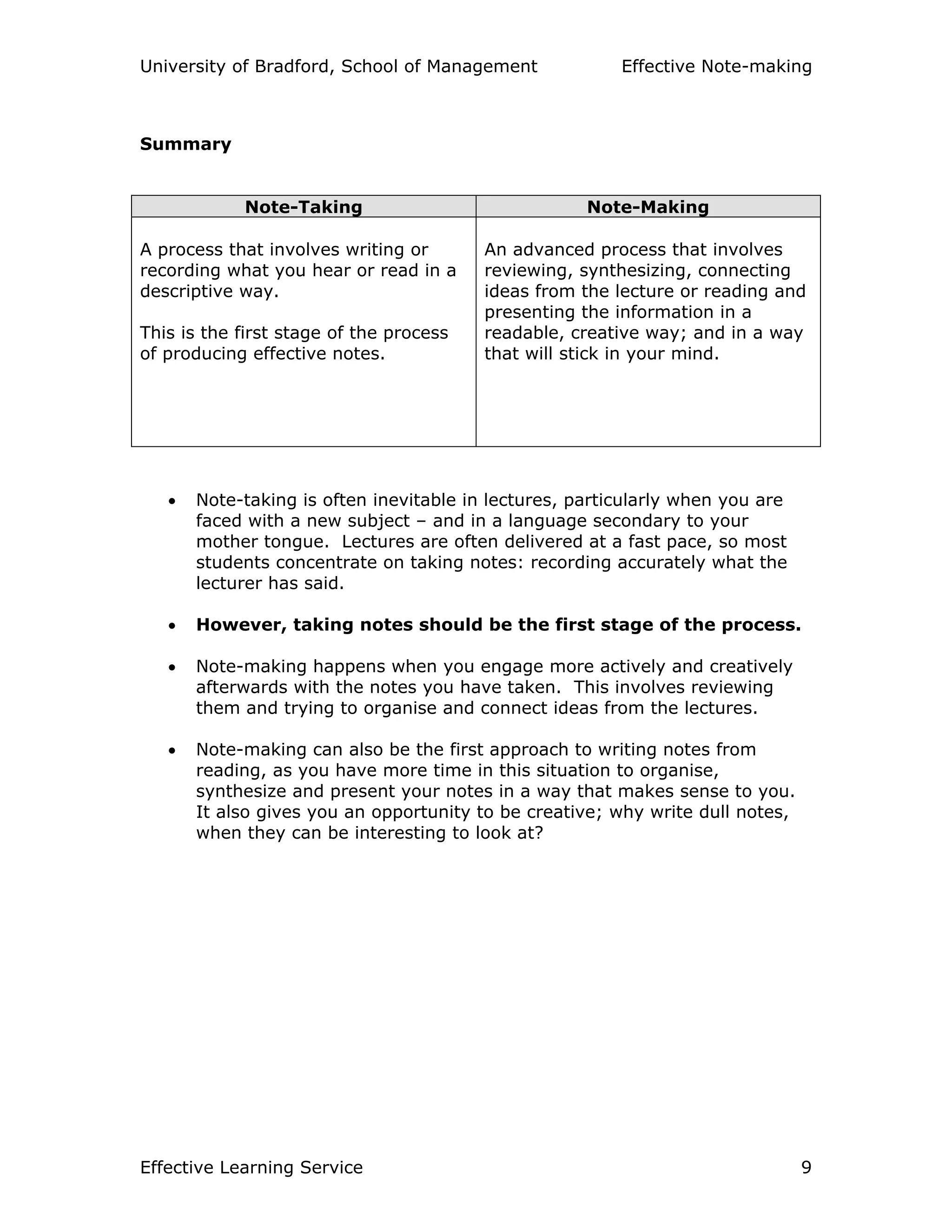
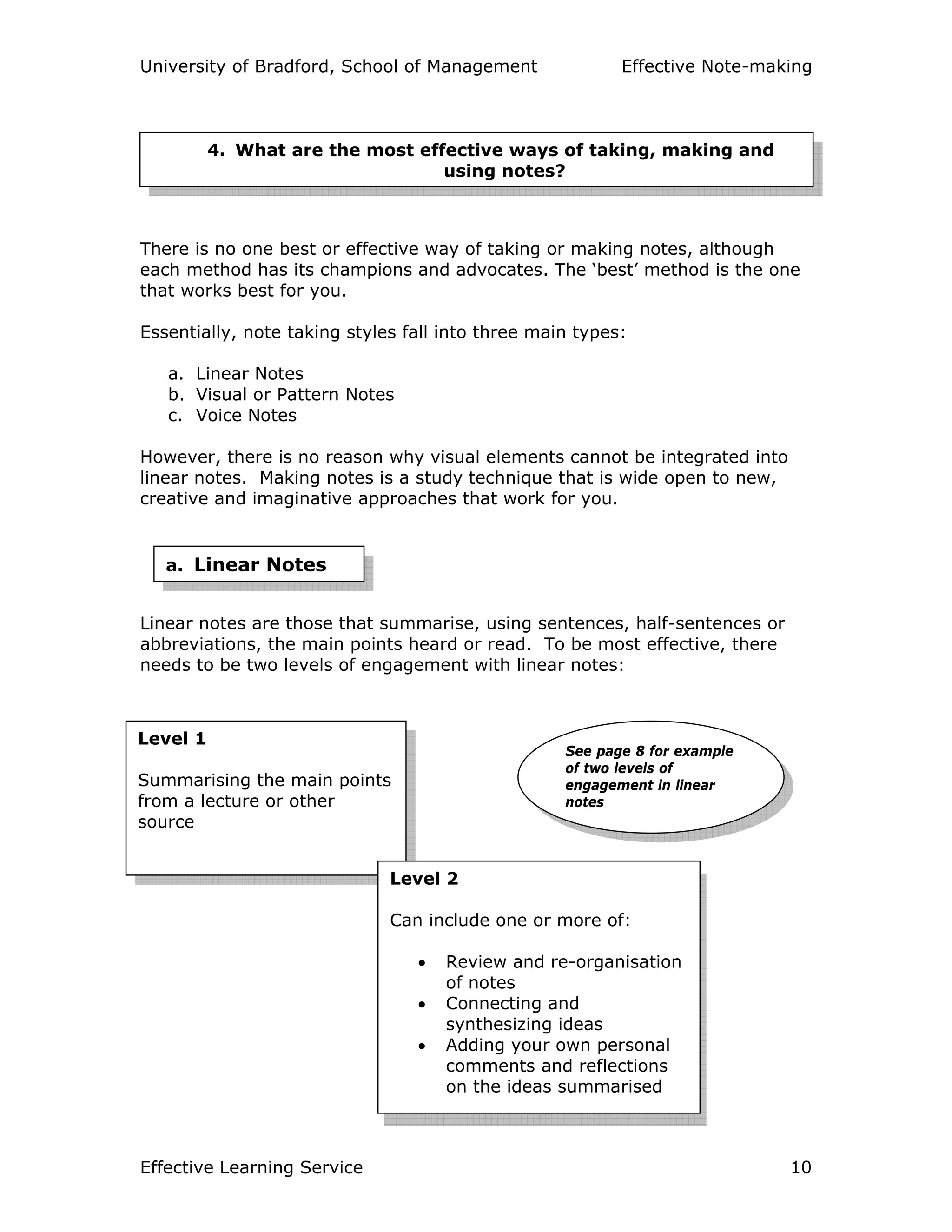

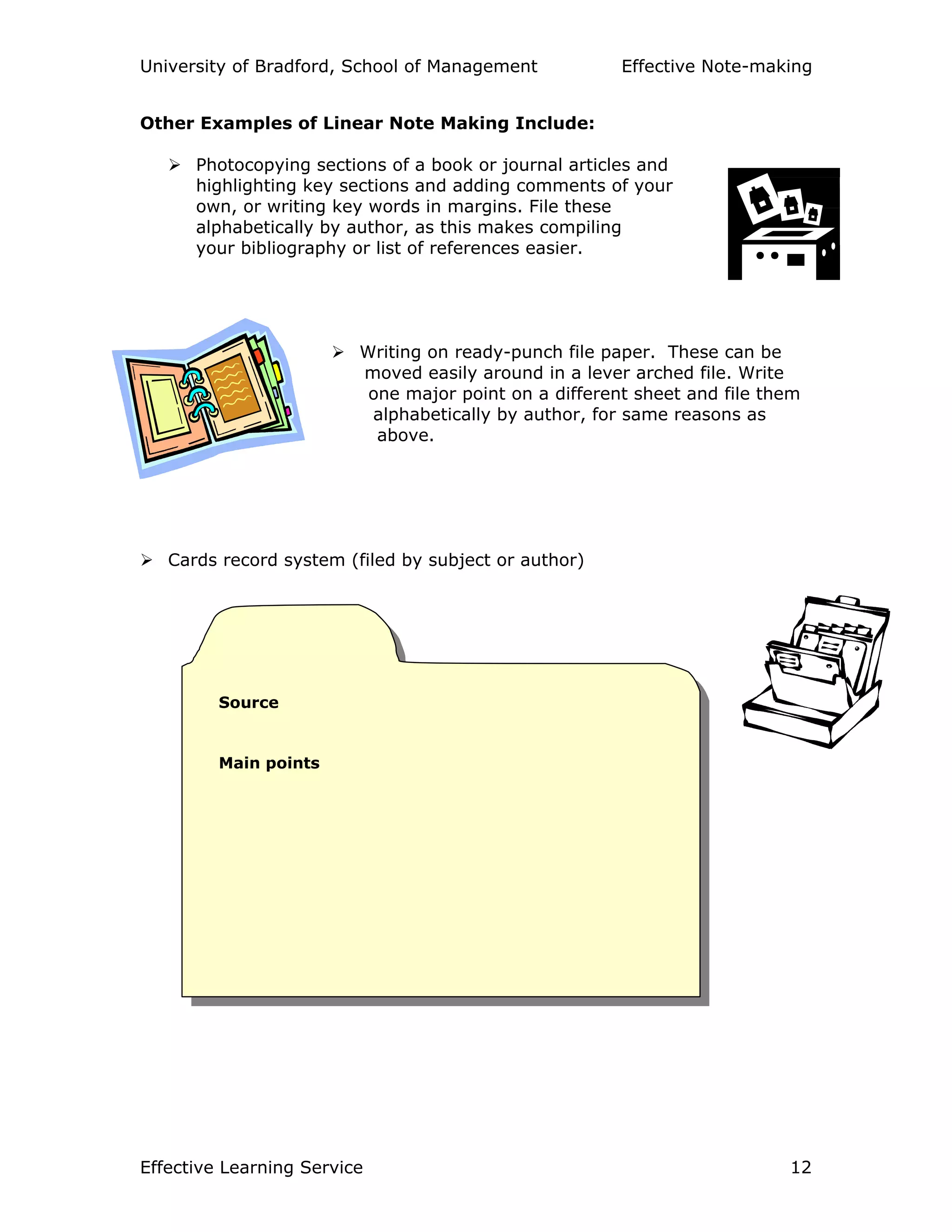

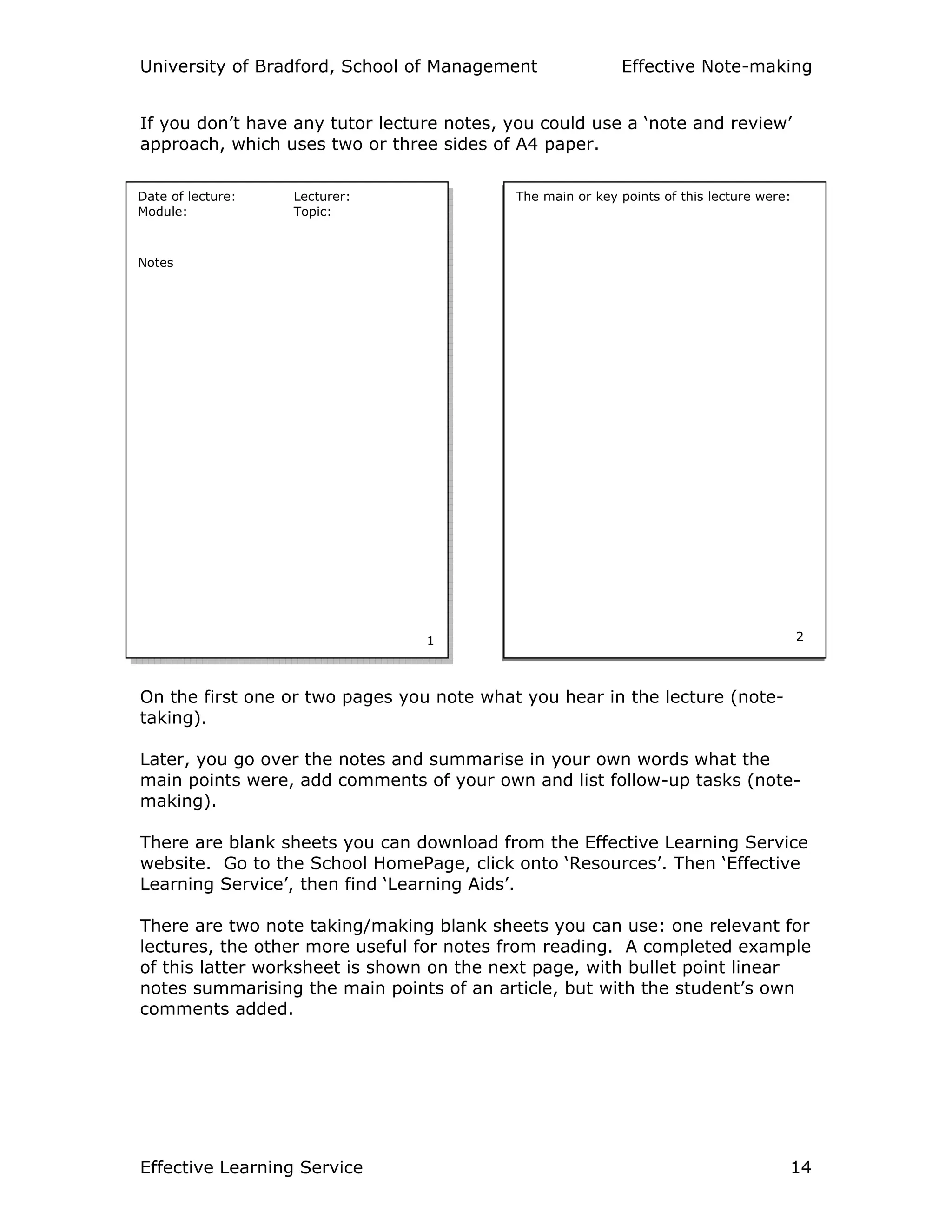

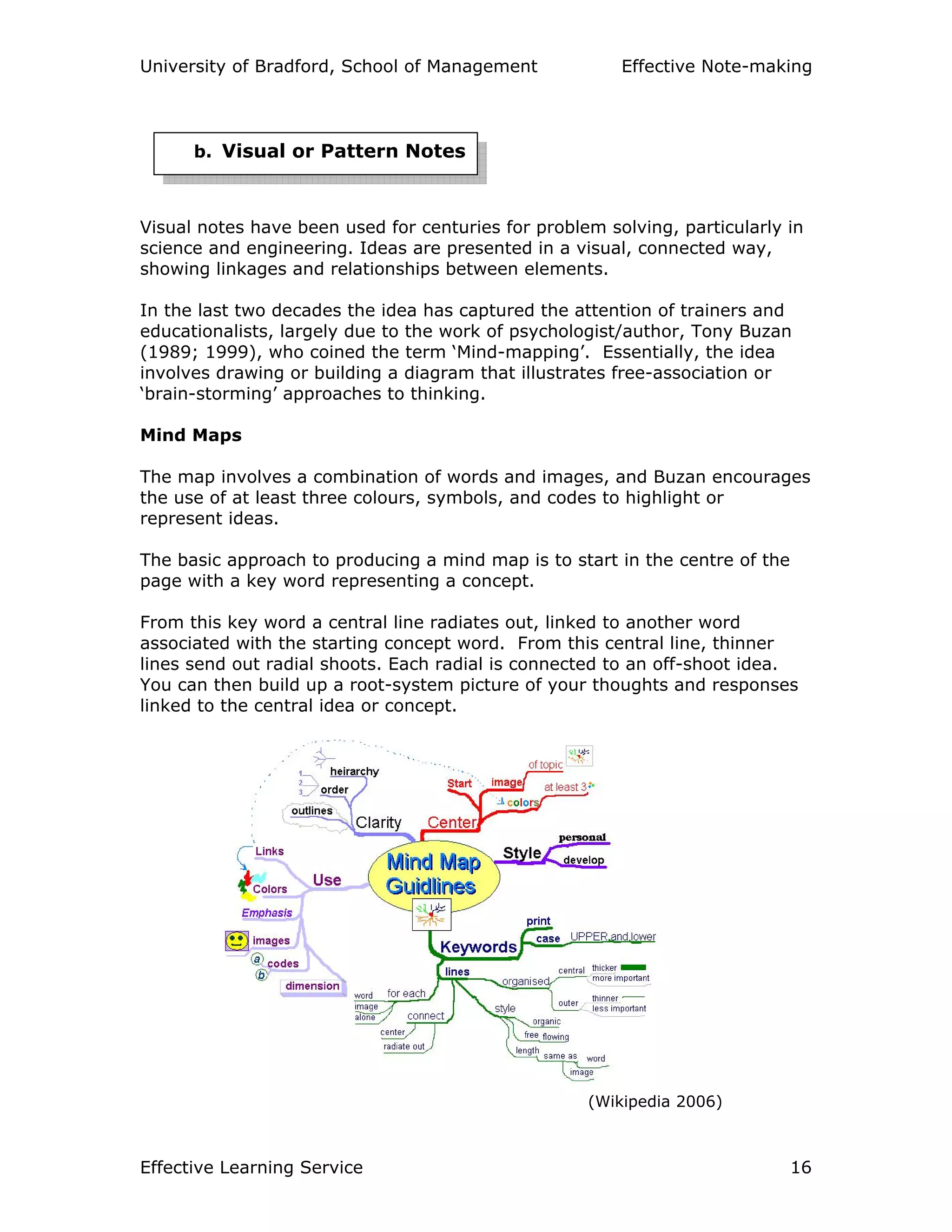
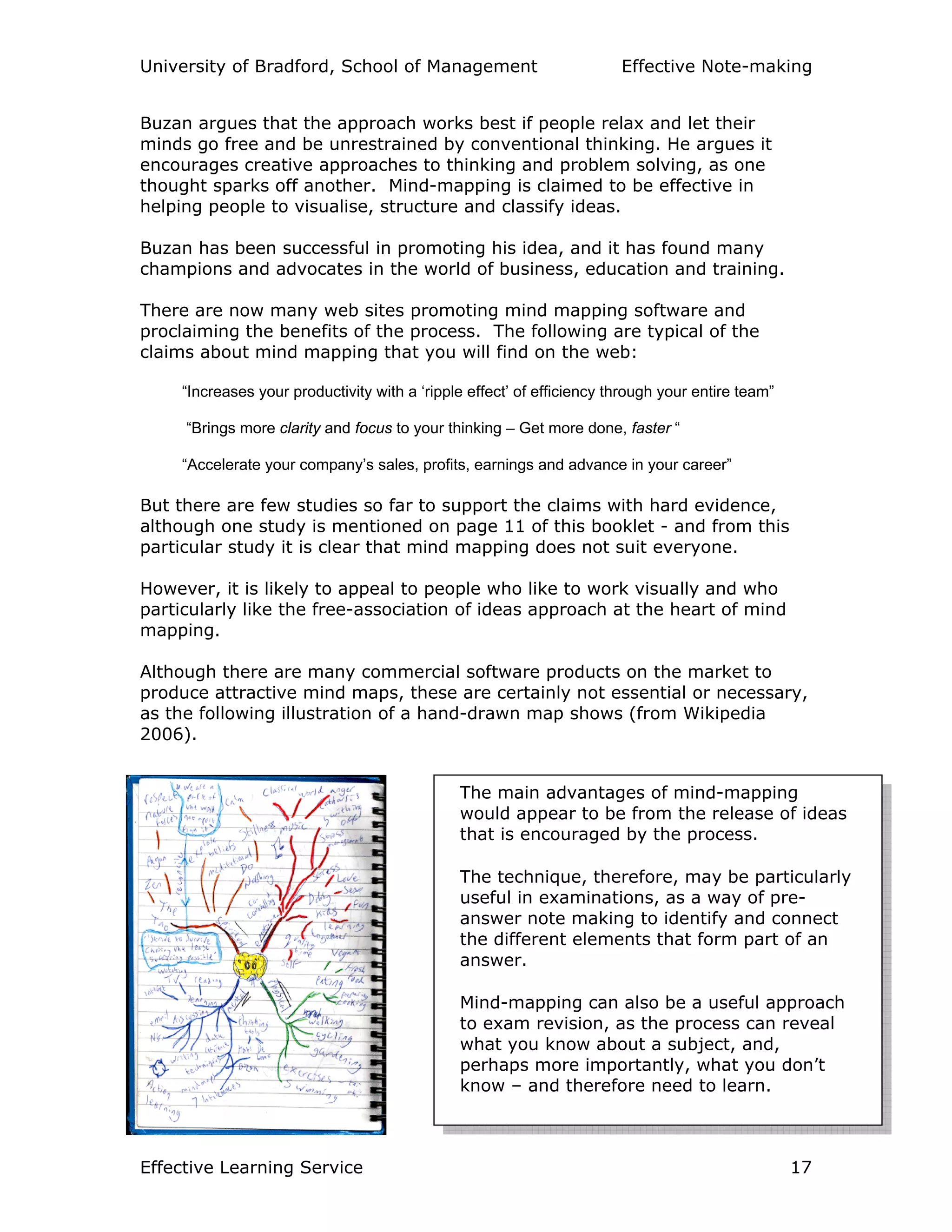
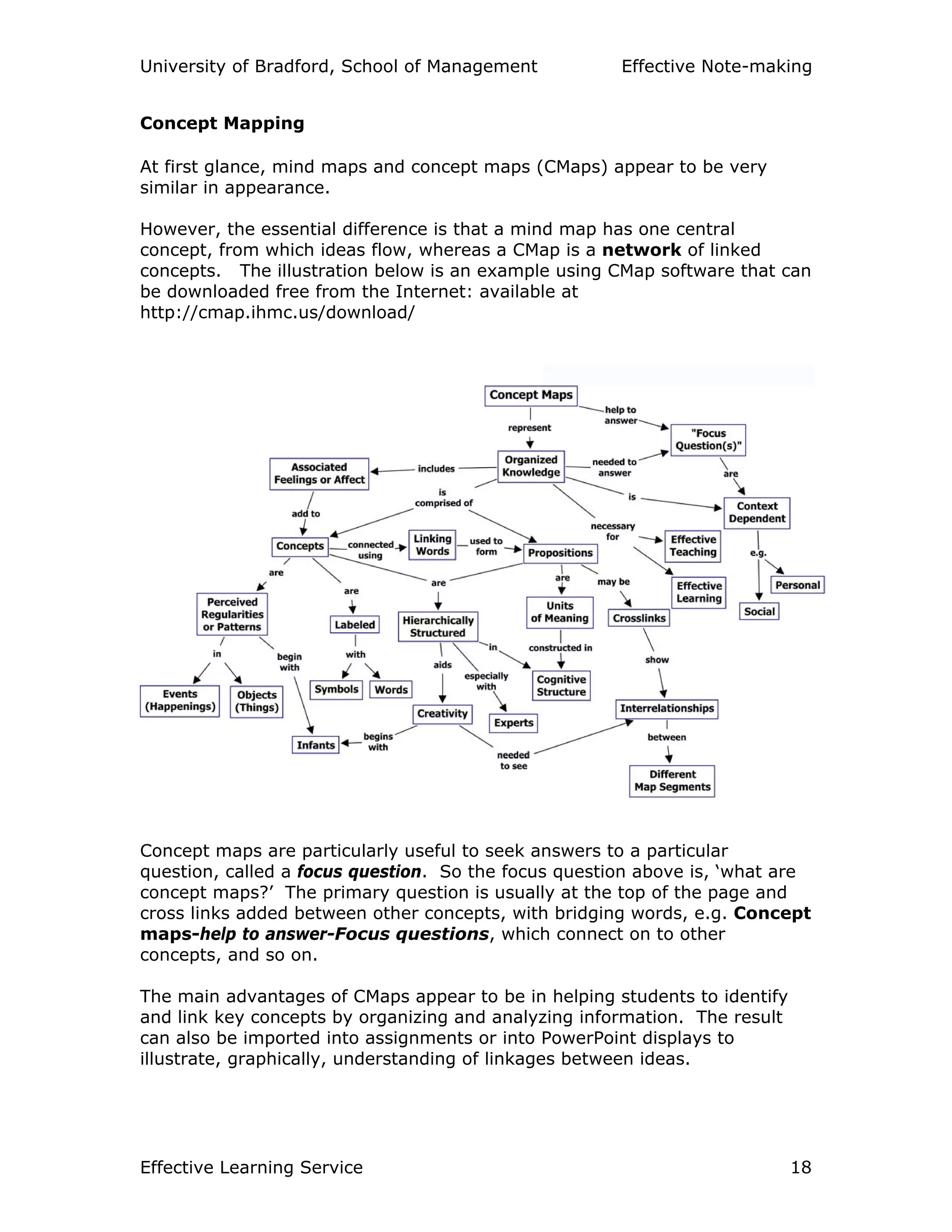
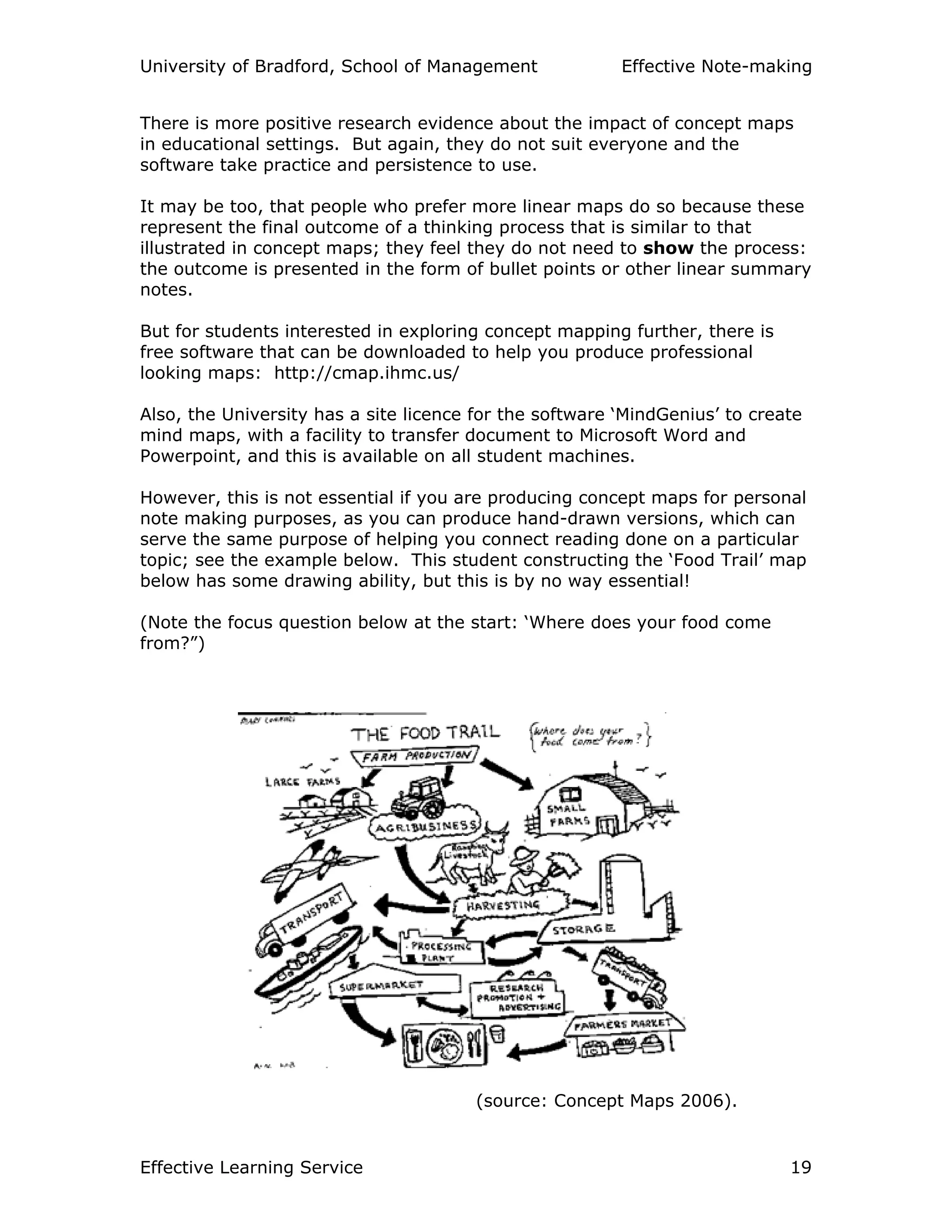
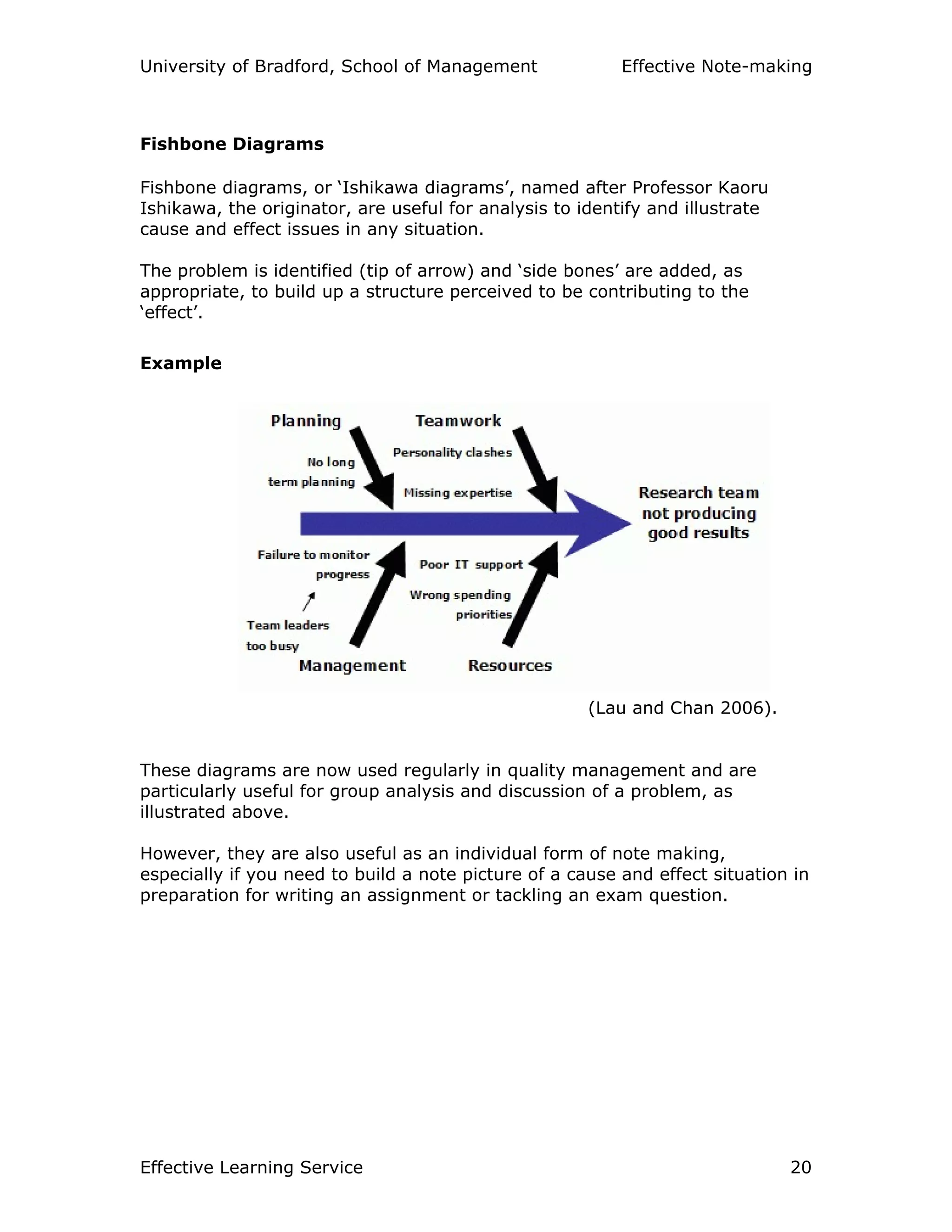
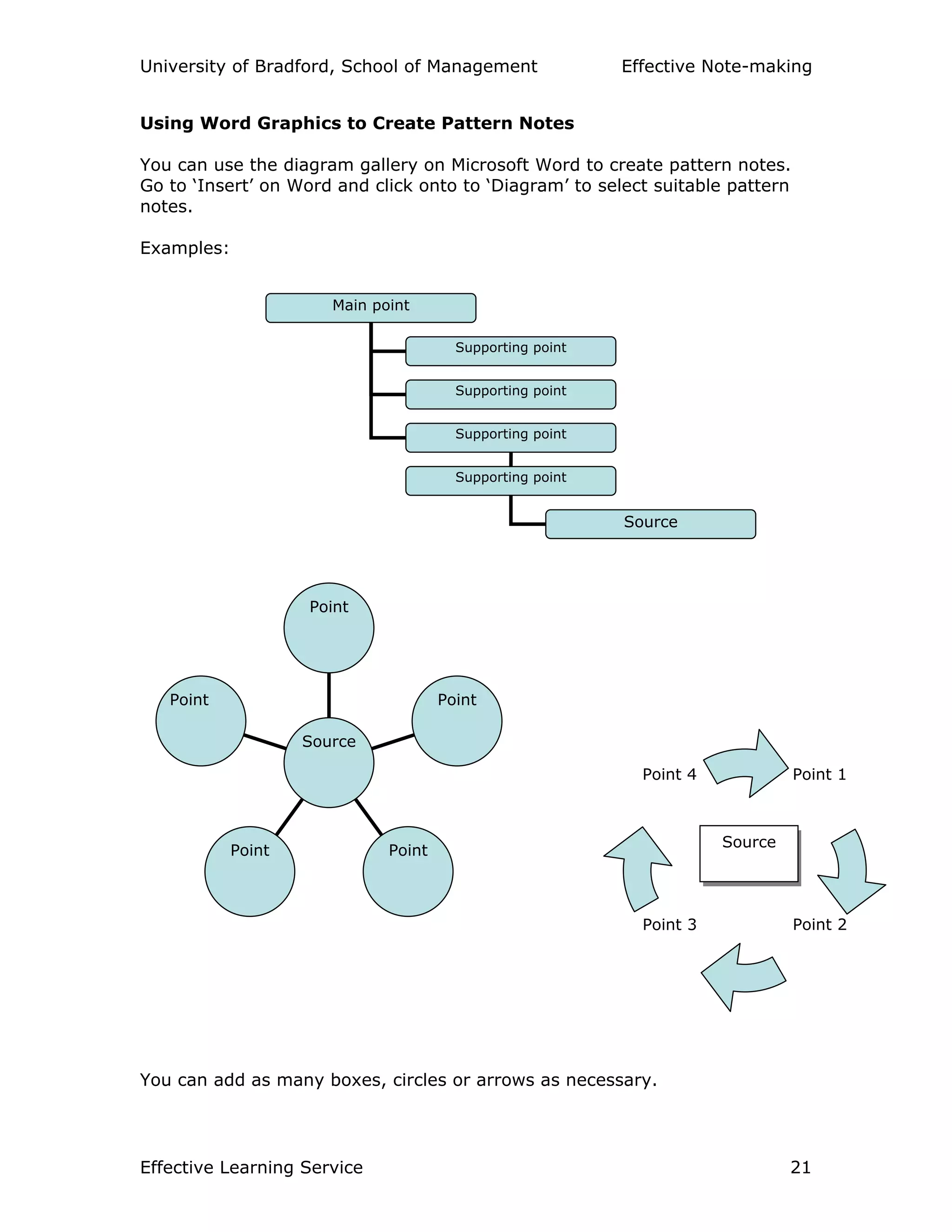
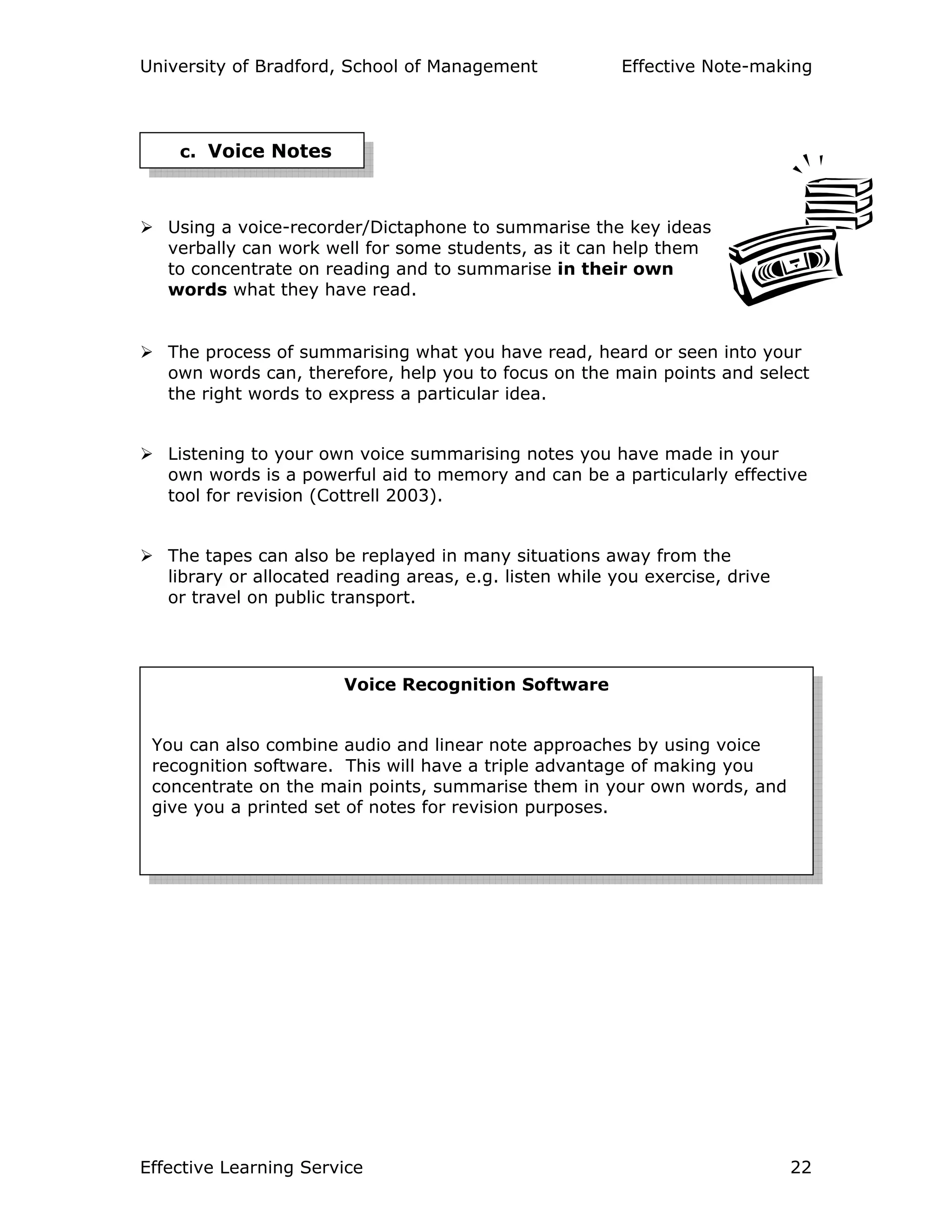
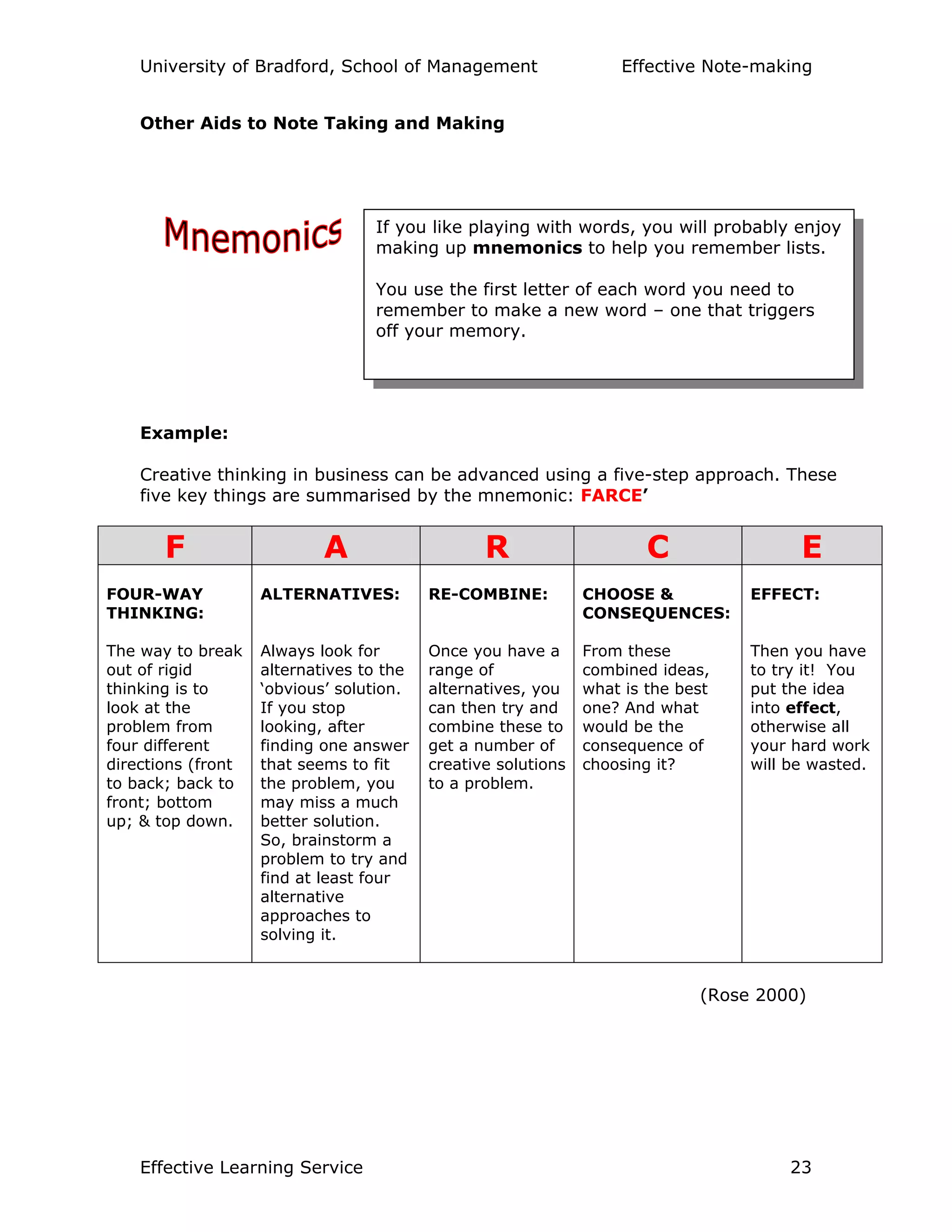

![University of Bradford, School of Management Effective Note-making
Effective Learning Service 25
References
Bligh, D. (1998). What’s the Use of Lectures, 5th
edn. Exeter: Intellect.
Buzan, T. (1989). Use Your Head. London: BBC Publications.
Buzan, B. and Buzan, T. (1999). The Mind Map Book. London: BBC
Publications.
Concept Maps (2006). Available at
http://classes.aces.uiuc.edu/ACES100/Mind/CMap.html [Accessed 7 Aug.
2006].
Cottrell, S. (2003). The Study Skills Handbook. Basingstoke: Palgrave.
Hartley, J. (1980). Learning and Studying: A Research Perspective. London:
Routledge.
Hartley, P. and Bruckman, C.G. (2002). Business Communication. London:
Routledge.
Kiewra, K.A. (1987). Note-taking and Review: the Research and its
Implications. Instructional Science, 16, pp.133-249.
Kiewra, K. A. and Benton, S.L. (1988). The Relationship Between
Information-processing Ability and Notetaking. Contemporary Educational
Psychology 13:11, pp. 33-44
Lau, J. and Chan, J. (2006). Critical Thinking Web. Fishbone Diagrams.
Available at http://philosophy.hku.hk/think/sci/ce-diagram.php [Accessed 7
Aug. 2006].
Lowes, R., Peters, H. and Turner, M. (2004). The International Student’s
Guide: Studying in English at University. London: Sage Publications.
Novak, J.D. and Caňas A.J. (2006). The Theory Underlying Concept Maps
and How to Construct Them. Technical Report IHMC CMAP Tools 2006-01.
Available at
http://cmap.ihmc.us/Publications/ResearchPapers/TheoryCmaps/TheoryUnde
rlyingConceptMaps.htm [Accessed 7 Aug. 2006].
Rose, C. (2000) Master it Faster. London: The Industrial Society)
Sinfield, S. and Burns, T. (2003). Essential Study Skills: The Complete Guide
to Success at University. London: Sage Publications.
Wikipedia (2006). Mind Map. Available at
http://en.wikipedia.org/wiki/Mind_map [Accessed on 7 Aug. 2006].](https://image.slidesharecdn.com/effectivenotemaking-150908141518-lva1-app6891/75/Effectivenotemaking-26-2048.jpg)
